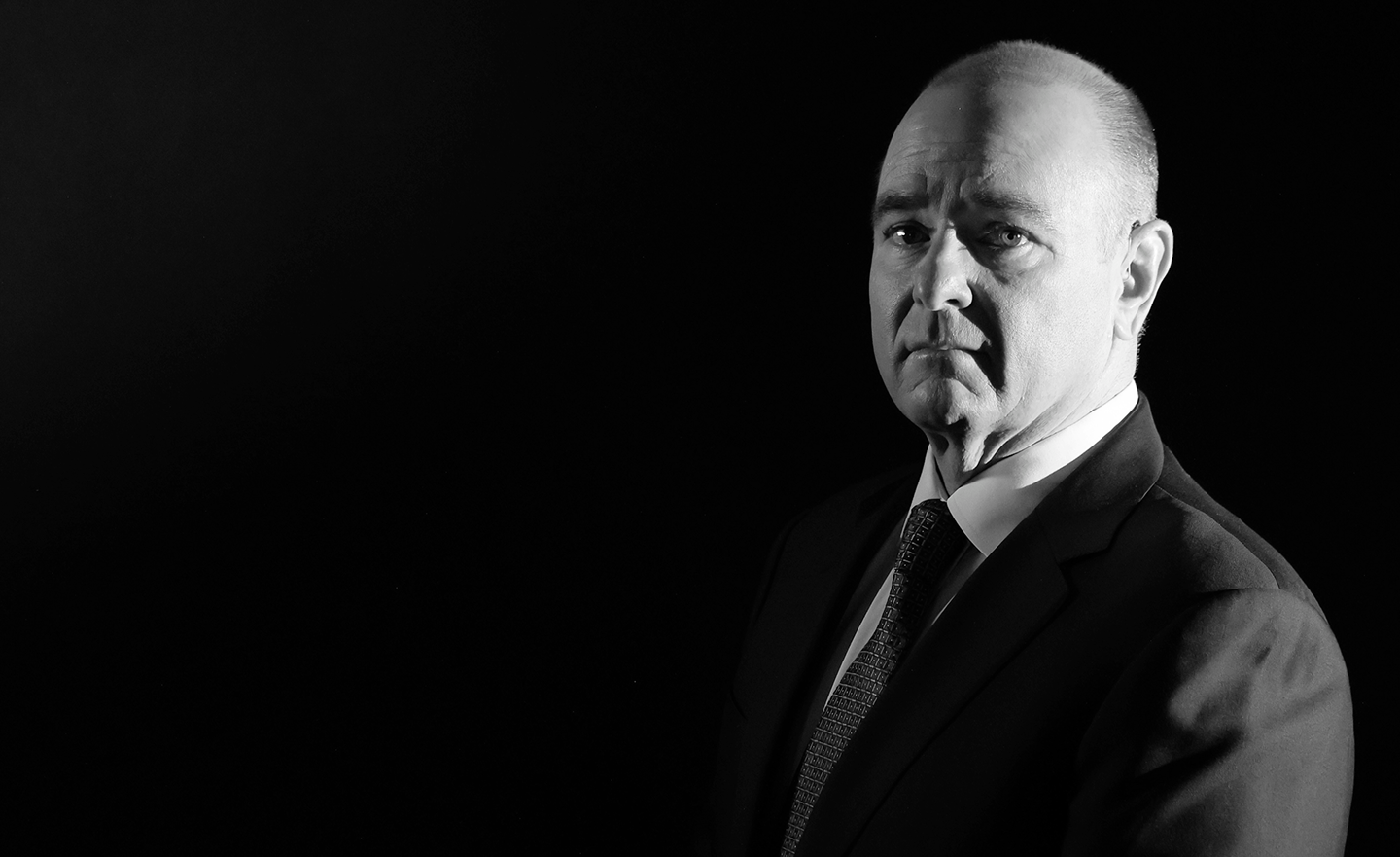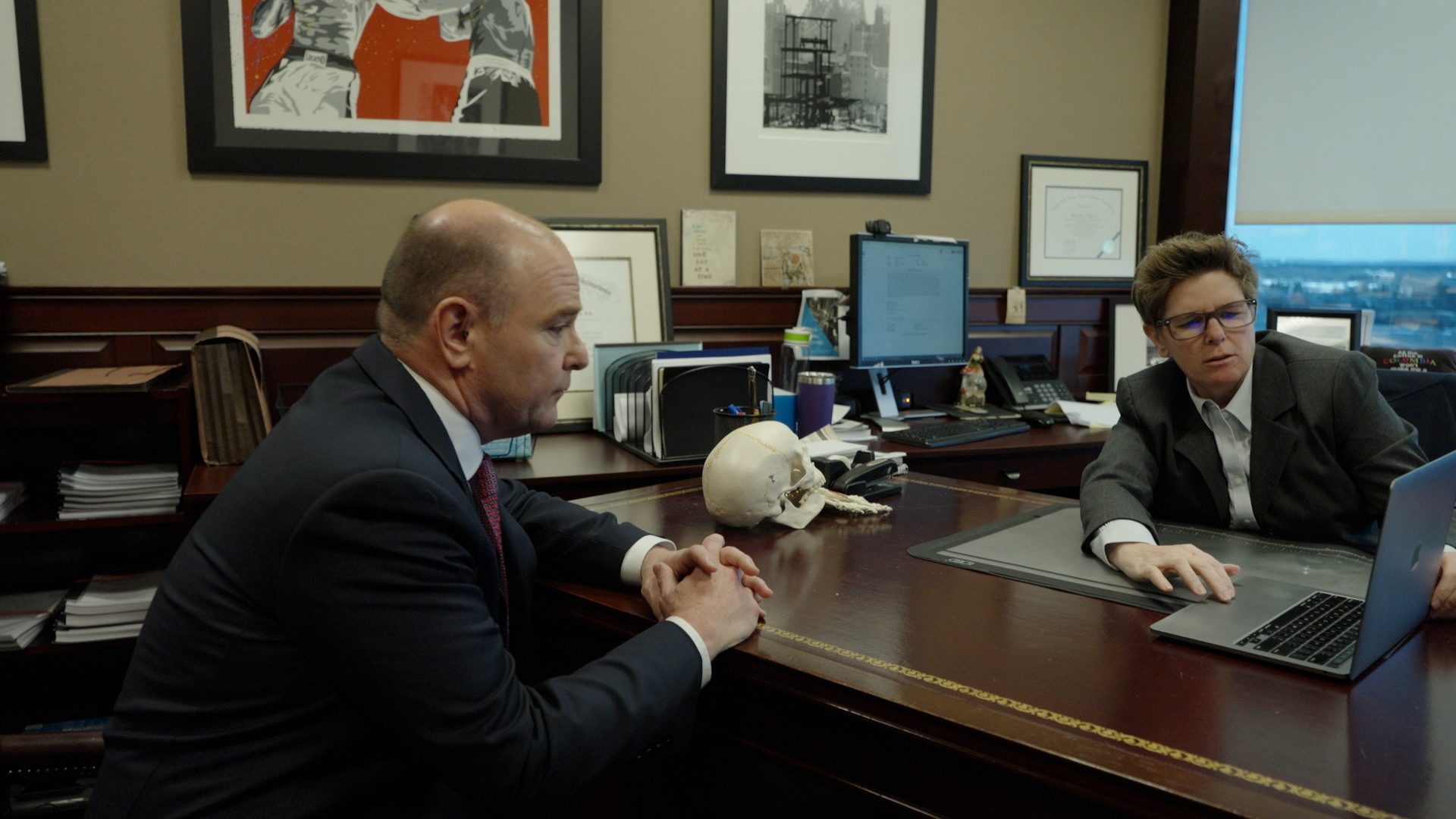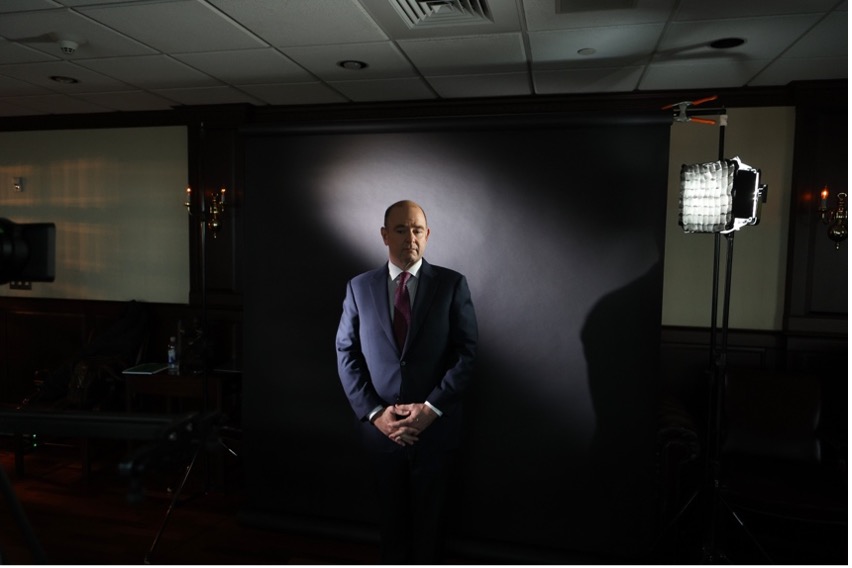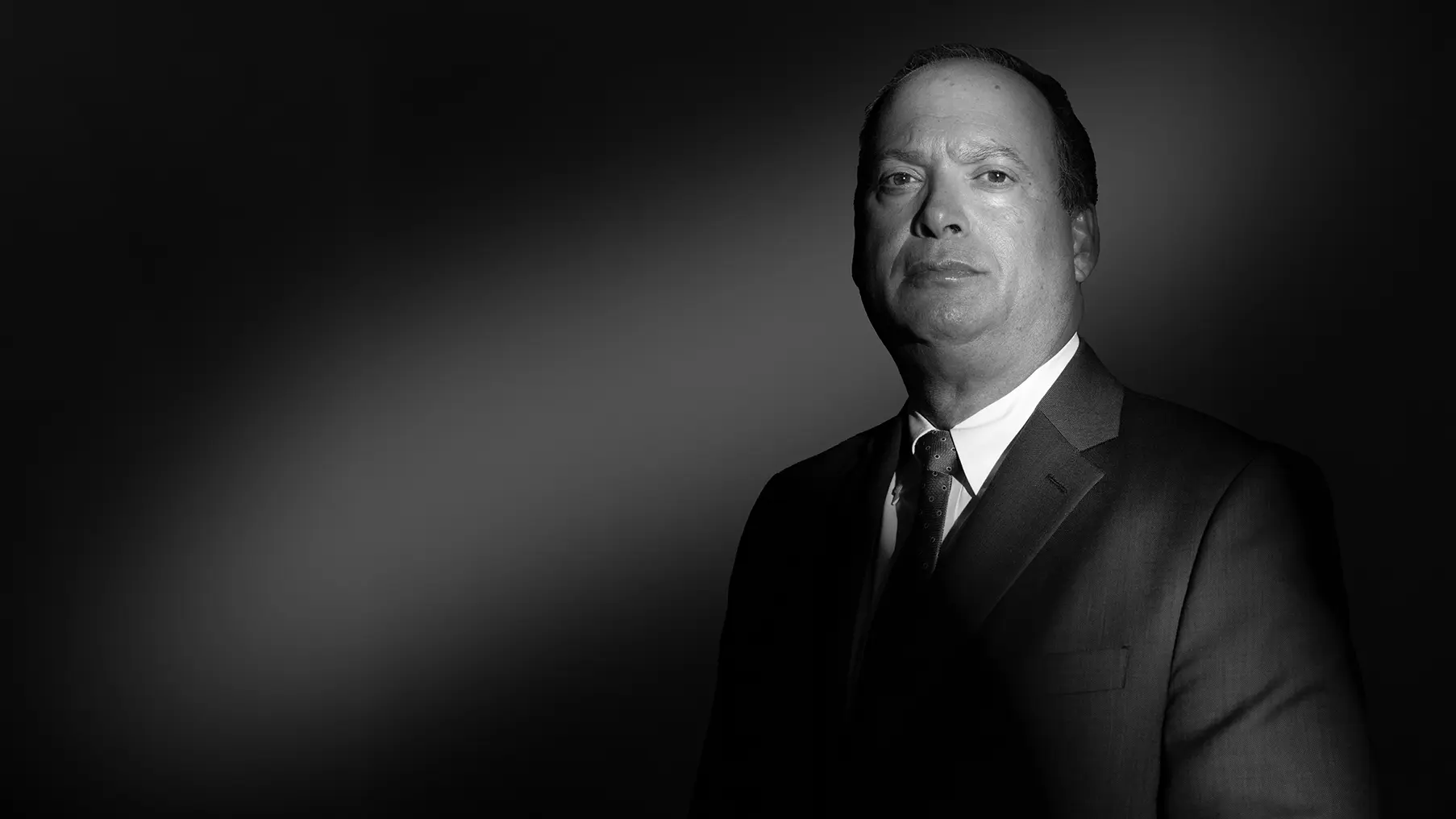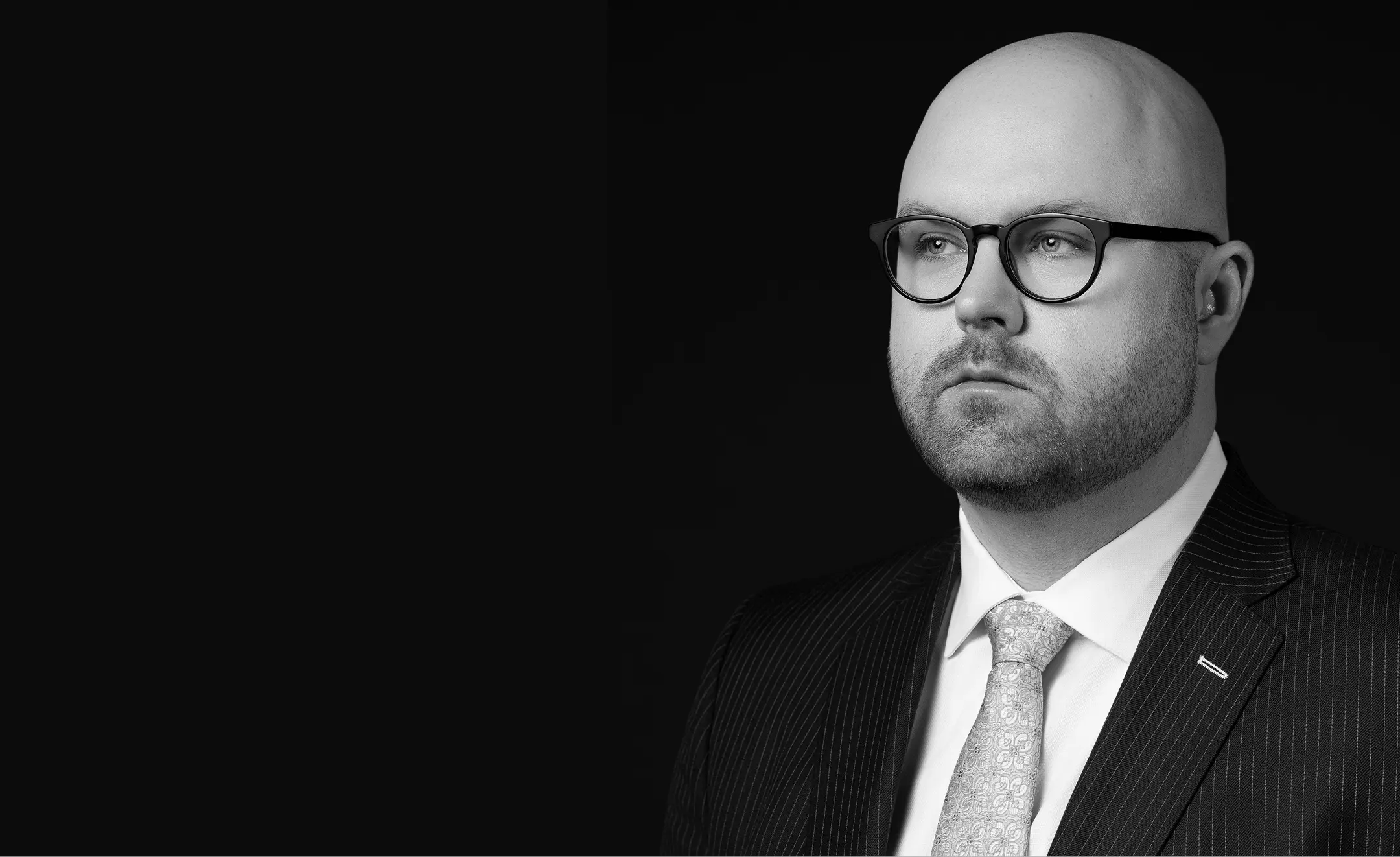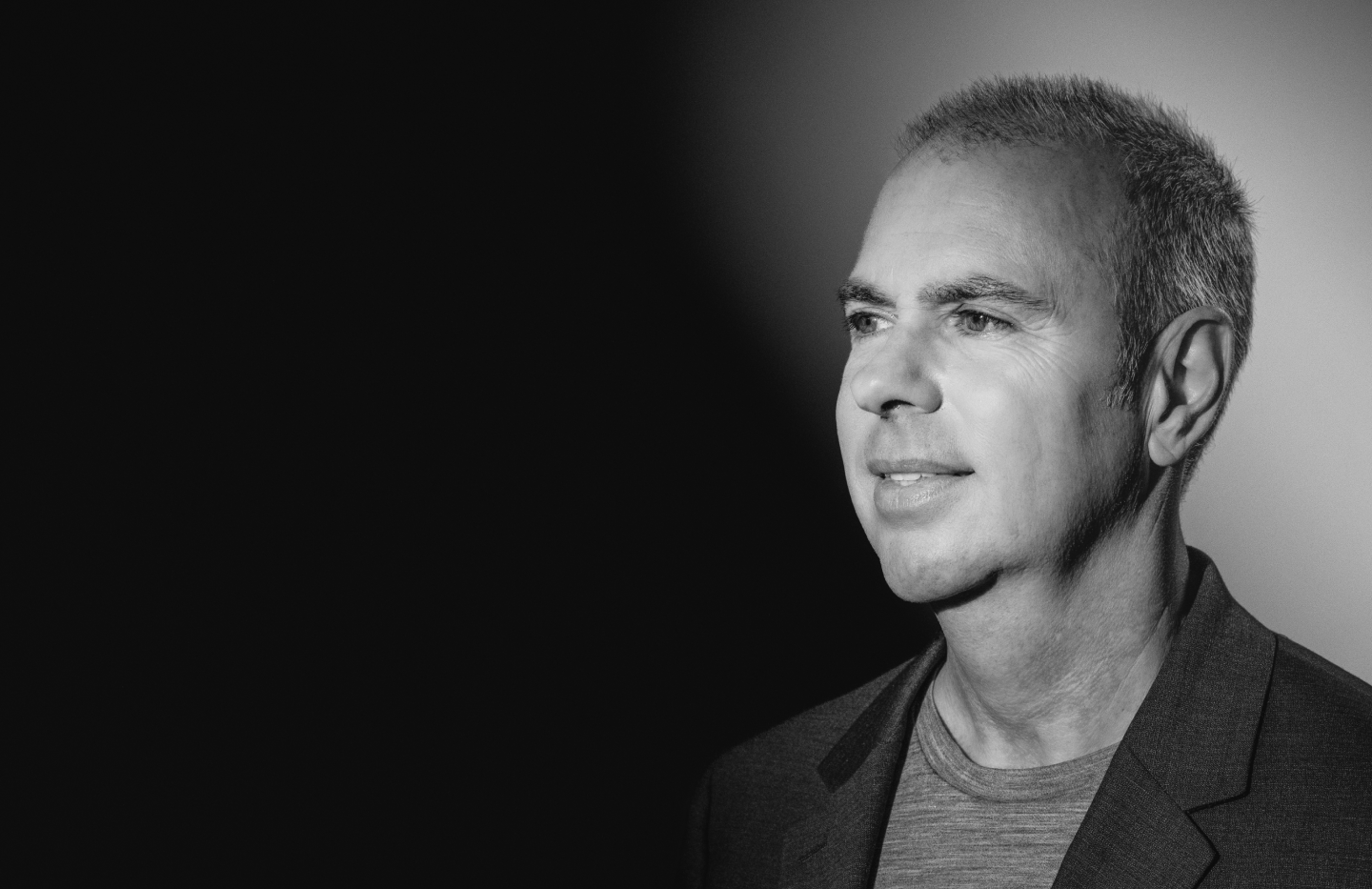Michael DuffyManaging partner at Duffy & Duffy, PLLC
Who advocates for patients and families when healthcare systems fail them?
Michael Duffy,
that’s who.
Built on a Legacy, Driven by Justice: Trial Lawyers Champion Those Injured
Long before Michael Duffy was trying medical malpractice cases in courtrooms across New York, he was learning the names of muscles and bones from one of the medical field’s original reference books, Gray’s Anatomy. Not because he was a medical student, but because his father, a prominent figure in personal injury law, used it for bedtime stories.
“My father’s philosophy was that a child didn’t care what their mother or father read to them as long as they were reading to them,” remembers Michael. “He needed to learn the anatomy, so he would read [it] to us. We didn’t know any better, [but] we got to sit with our dad.”
That unconventional yet touching effort to bond with his kids led to something else fruitful: the foundation for Michael’s future law career as managing partner of Duffy & Duffy, PLLC.
Carrying the torch of family legacy
“From a very young age, [I knew] the family business was law,” Michael says. “[Dad made] sure I went to a law school that would train me to do trial work and advocate on behalf of other people, as opposed to other corporate work.”
That law school was St. John’s University School of Law, where he earned his Juris Doctorate (JD). Once that piece of the puzzle fell into place, Michael was eager to prove himself as the son of Manhattan legal legend, James Duffy. Yet, he never dreamed he’d actually get to work alongside him.
By 2001, Michael had already been practicing law at his own Long Island law firm. But around the same time, his father announced he was leaving his firm in Manhattan…to open his own law firm on Long Island, too.
“I told him that was a bit of a problem, because I was already a guy trying to do just that. But he said, ‘Too bad, kid,’” Michael recalls. “So I did what any Irishman would do: I called my mother. And I don’t know what happened, but soon enough we were partners.”
What followed was a partnership that lasted 25 years, during which time they transformed the legal landscape for birth injury and medical malpractice cases across New York. From its inception, Duffy & Duffy’s ethos was about fighting for people who had nowhere else to turn after being harmed by an industry meant to help.
This became especially important to James Duffy after pivoting from defending insurance companies to representing children neglected at birth, resulting in cerebral palsy. He took these cases on as his life’s work, and today, Michael continues his late father’s efforts with tenacious resolve. Now, Duffy & Duffy is the greater New York area’s largest and most successful medical malpractice firm, having settled hundreds and hundreds of medical malpractice cases in recent years. Michael Duffy leads the firm as managing partner and general counsel.
“Since we all grew up at his knee, the entire family became enmeshed in taking care of people that otherwise wouldn’t be taken care of, ” says Michael.
Making the NICU safer
As a trial lawyer, Michael’s goal transcends just attaining justice for his clients. For him, it extends to transformation – of standards, of laws, and of practicing medicine – that keeps people safe. Especially one of our most vulnerable populations: newborns in the neonatal intensive care unit (NICU).
One case Michael remembers involved a local hospital’s practice for on-call neonatologists, or doctors that help deliver and treat high-risk babies.
“[The hospital’s] procedure was that ‘on call’ meant arriving within a half hour or 40 minutes,” Michael explains. “So, in the middle of the night, the neonatologist needed in the delivery room was asleep in bed…and it [would be] another 40 minutes before the neonatologist got to the hospital.”
Unfortunately, the hospital would soon learn that 40 minutes was too late to properly intervene. Because this wasn’t just an example – it was precisely what happened.
“By that time, the child had been literally destroyed neurologically,” says Michael. But perhaps even more shockingly, he reveals:
“The mother was transferred to that hospital because they were supposed to be a high-risk hospital. The expectation of the mother, and those who were sending her to the hospital, was that they had a team able to deliver this high-risk child – that whatever that child needed in order to survive would be provided. Unfortunately, while that was how it was advertised, that wasn’t actually what happened.”
After learning its grave details, Duffy & Duffy pursued the case for the sake of this grieving mother, as well as all future mothers entrusting their child’s wellbeing to this hospital. And, not to mention, to hold the hospital accountable for its negligence.
“As a result of that lawsuit, the neonatology protocol in that hospital now requires a neonatologist to be actively on duty all night long,” Michael recalls.
Yet even such a clear display of negligence was hard-fought in the courtroom.
“[The hospital] fought it, their position [being] that this was the standard in the industry – that nobody is required to have a bed laying there for a neonatologist,” says Michael. “[Duffy & Duffy’s] position was: we don’t want a bed. We want a neonatologist who is actively taking care of these children.”
“Their rationale was ultimately about money. They didn’t want to have to pay someone to stay there all night long,” Michael said.
Since that verdict spurred a change in protocol, Michael mentioned the number of cases involving children that would have been impacted by that neonatology practice have dropped off drastically.
It’s real-world evidence how one case outcome can save countless lives.
“Trial lawyers are the knights of old. We get to stand up for people. [We] are the voice of the people.”
Michael Duffy
Managing partner at Duffy & Duffy
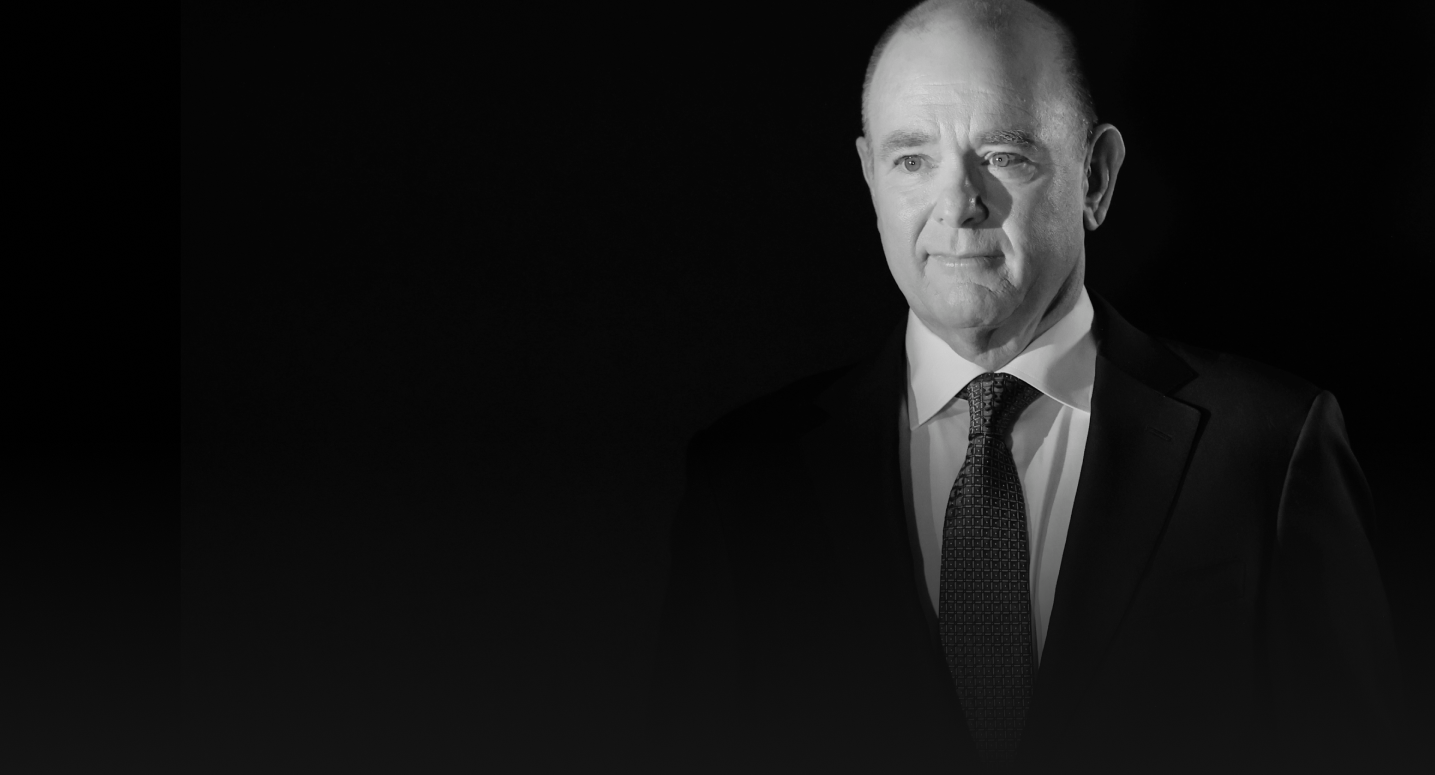
“Trial lawyers are the knights of old. We get to stand up for people. [We] are the voice of the people.”
Michael Duffy
Managing partner at Duffy & Duffy
A settlement turned second chance
Michael will be the first to tell anyone that trying medical negligence cases is a labor of love – but that the return is fully worth it. When it comes to these cases, “returns” aren’t always about the money or the courtroom victory – but seeing the true value of that labor firsthand.
Specifically, Michael recalls a case where he represented a man who suffered a stroke as a result of malpractice. On the day of his stroke, he sought immediate medical attention at a nearby emergency room (ER) after noticing his symptoms.
Because most strokes are caused by a blood clot that blocks blood flow to the brain, time is of the essence – especially if that patient is already experiencing certain signs and symptoms of a stroke.
“Particularly in the ER, there is a medication that can be administered called a clot buster [which] goes in and blows out the clot,” Michael explains. “At that time, you had to get it within three hours of symptoms.”
This “clot buster” medication is most commonly a tissue plasminogen activator (tPA), used to dissolve these problematic blood clots.
“He showed up within a half hour, but because that hospital was understaffed, they left him sitting there for five hours waiting for treatment,” says Michael. “So, his stroke became permanent and he was unable to recover from it.”
The consequences were devastating. Years earlier, the man had lost his wife, leaving him as the sole caregiver for his two children. He was an EMT who had plans to attend nursing school and build a more stable life for his family. However, the stroke left him unable to work and earn a living.
“We often don’t hear from clients, but we did hear from him,” Michael remembers. “Representing him, we got to understand how hard it was – he had no money, he was on his own, and he couldn’t get any help raising these two young children.”
Facing enormous financial and emotional pressure, he fortunately had Duffy & Duffy in his corner, not just advocating for justice, but fighting for his livelihood, too.
“We recovered an amount of money for him, and he told us later that with [it], he was able to move his children out of a two-bedroom apartment and into a house,” Michael says. “He was able to go back to school, and he did become a nurse. We got to see the effect of what we do.”
No matter how often he hears about negligence against innocent people, Michael continues feeling awestruck by the indomitable human spirit of his clients. It’s what keeps him in the fight, case after case.
“It’s amazing to see what people can do, even when they are severely injured,” Michael says. “We get to see them strive to raise themselves above the injury, the circumstance, and in many instances, the torture their life might have become.”
The mission is simple: go out of business
Focusing largely on medical malpractice cases, Michael still sees the value and honor in the medical profession. It’s a net positive for humanity, but law firms like Duffy & Duffy exist as its checks and balances.
“It’s a very unregulated industry,” Michael asserts. “Unfortunately, we see the people that are injured through avoidable medical errors.” And in fact, Michael cites that the medical industry sees around 250,000 avoidable deaths per year.
“If they’re avoidable, why aren’t they being avoided?” Michael asks rhetorically. “The reality is, it is cheaper for the medical profession to harm people and pay out on claims than it is to actually protect people.”
This common denominator isn’t new, either. It was something even James Duffy grappled with during his practice.
“From the very beginning of this firm, and from my father’s career, the philosophy was always that if we did our job right, we would put ourselves out of business,” Michael quips. “It’s our mission, goal, and objective. If we do our job right and patients are no longer injured by avoidable medical errors, we’ll be out of business – and we’ll be fine with that.”
While it’s an unconventional attitude, it’s one with merit – one rooted in a trial lawyer’s commitment to their clients’ and future clients’ safety and wellbeing.
“It’s become more and more important that we stand up and tell hospitals or the medical profession, you can’t just harm people,” Michael stresses. “There is accountability, and we’re the ones who are going to hold you accountable.”
Financing to fight the good fight
The work for trial lawyers focusing on medical malpractice cases is grueling. The stakes, enormous. And the costs? Often unbearable – especially for a law firm that operates on a contingency fee basis.
“Between retaining medical records, analyzing medical records, and engaging many different medical experts, the cases are exponentially more expensive to prosecute than an automobile accident,” says Michael. “[Also,] medical malpractice has a very long tail – the average case lifespan is five to seven years, where an automobile case might be 18 months to two years.”
Trying these long-haul cases was a main reason Duffy & Duffy needed an experienced banking partner that not only understood their challenges, but also their line of work as a contingency fee practice. It’s precisely what led them to Esquire Bank.
“Esquire Bank has been instrumental in the growth of this law firm,” Michael says. “Without them, we wouldn’t really be able to [help] as many people as we could.”
Because if there’s anything Michael’s father taught him in his law journey, it’s that helping people is what it’s all about.
“Trial lawyers are the knights of old. We really get to do something that, as children, we all wish we could do: we get to stand up for people. [We] are the voice of the people,” Michael beams.
Now, with this financial freedom thanks to Esquire Bank, Duffy & Duffy can pursue justice without compromise, allowing them to keep pace with multi-defendant teams and large corporations, and as Michael puts it: “keep fighting the good fight.”
“If we can get to a place where the medical profession protects their patients the way they protect their profits, then we’ve done our job.”

